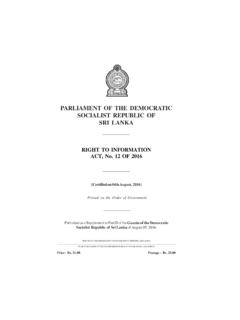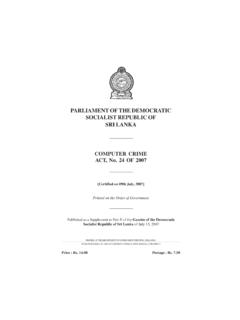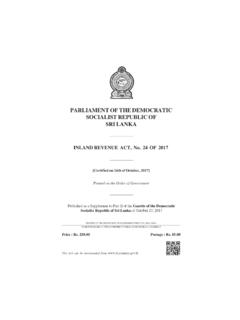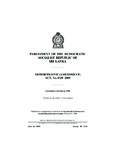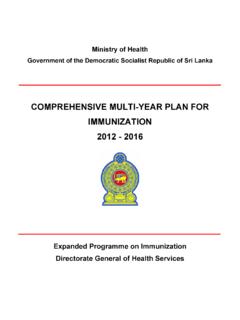Transcription of Spanish Civil War 1936–9 - London International Model ...
1 74 The long-term causes of the Spanish Civil War Key question: To what extent was the Spanish Civil War caused by long-term social divisions within Spanish society? The Spanish Civil War began on 17 July 1936 when significant numbers of military garrisons throughout Spain and Spanish Morocco, led by senior army officers, revolted against the left-wing Republican government. The conspirators were joined by various groups hostile to the Republican government including monarchists, conservatives and fascist paramilitaries. The rebels also received assistance from the right-wing governments of Germany and Italy. Most of north-west Spain quickly came under army, or Nationalist, control, but the rising was not universally successful. The military rebels failed to take the key cities of Madrid and Barcelona and most of rural southern and eastern Spain. The outcome was that Spain was divided and Civil war began (see the map on page 89). Spanish Civil War 1936 9 CHAPTER 2 The Spanish Civil War 1936 9 was a struggle between the forces of the political left and the political right in Spain.
2 The forces of the left were a disparate group led by the socialist Republican government against whom a group of right-wing military rebels and their supporters launched a military uprising in July 1936. This developed into Civil war which, like many Civil conflicts, quickly acquired an International dimension that was to play a decisive role in the ultimate victory of the right. The victory of the right-wing forces led to the establishment of a military dictatorship in Spain under the leadership of General Franco, which would last until his death in 1975. The following key questions will be addressed in this chapter:+ To what extent was the Spanish Civil War caused by long-term social divisions within Spanish society? + To what extent should the Republican governments between 1931 and 1936 be blamed for the failure to prevent Civil war?+ Why did Civil war break out?+ Why did the Republican government lose the Spanish Civil War? + To what extent was Spain fundamentally changed by the Civil war?
3 1K E Y T E R MSpanish Morocco Refers to the significant proportion of Morocco that was controlled by Spain as a colony from 2: Spanish Civil War 1936 975 The Spanish Civil War was fundamentally rooted in, but not exclusively caused by, profound social divisions between the wealthy, privileged few and the masses of poor rural and industrial workers. The desire to improve the conditions of the workers, through political action and demonstrations, led to conflict with those who were opposed to such change. But the Civil war was a war of multiple conflicts, with long-term separatist and anti-clerical agendas also provoking considerable tension and fuelling political conflict. This first section examines these long-term causes of the and social problems 1900 31 Rural povertyThere existed extreme polarization of wealth in many rural areas of Spain between the landlords and the landless labourers. This was particularly so in southern Spain where the agricultural system consisted of huge estates, called latifundia, which were owned by a few wealthy landlords and worked by labourers hired by the day.
4 This system kept the labourers poor because:L the hiring of labour by the day gave no financial security and unemployment was commonL the operation of one-crop farming meant that the availability of work was highly seasonal, often representing only 200 days work per yearL wages were rural unrest took place in southern Spain where rural hardships were most severe. Left-wing unions, which organized strikes and demonstrations against exploitative landlords, appealed to the labourers. Particularly popular was the socialist union, the Union General de Trabajadores (UGT), and the anarcho-syndicalist Confederacion Nacional del Trabajo (CNT), the latter of which, by 1918, had over 700,000 members. Attempts to improve conditions through strike action, however, were rarely successful, not least because landlords frequently brought in alternative labourers from outside the region to do the farm work instead. Agricultural issues had a significant impact on national politics. Agricultural employment constituted per cent of the workforce by 1930 and the growth in rural unrest presented a problem for central government.
5 The different possible solutions to the agrarian problems frequently caused serious divisions between left- and right-wing povertyThe percentage of the workforce employed in industry increased in the early twentieth century, from per cent in 1923, to per cent in 1930. Urban centres grew as a consequence, with over a million people migrating to the cities in this period. By 1930, 42 per cent of Spain s population lived in towns of over 10,000 inhabitants. Spain s main industrial regions were:L the Basque country, for iron and steelK E Y T E R MSeparatist Favouring a degree of political independence or autonomy for a particular General de Trabajadores General Union of Labourers, the main union of the Socialist An anarchic belief in which proponents desire the central authority of the state to be replaced by the operation of control by trade Nacional del Trabajo National Labour Confederation, an anarcho-syndicalist trade was the nature of the economic and social problems in Spain?
6 76L the Asturias, for coal miningL Catalonia, for textile industries. Industrial workers were frequently housed in inner-city slums where rents were high and living conditions overcrowded and insanitary. There was no social legislation, so there was no minimum wage, no maximum working hours or protection from dangerous working conditions. The concentration of dissatisfied workers in Spain s cities led to the growth of trade unions and strikes. For the more privileged, the increase in unrest was frequently seen as evidence of the growing threat of social revolution following the successful Bolshevik Revolution in Russia. Urban issues, as with agrarian problems, therefore contributed to political polarization in Spain. Political instabilitySeparatism in Spain 1900 31 Spain was a unified country, but there was a strong tradition of separatism in Catalonia and the Basque country. Both regions prized their distinctive culture, language and history, and sought a significant degree of political autonomy.
7 This separatism was centuries old, but its popularity increased with the growth in the economic importance of Catalonia and the Basque country in the twentieth century. Separatists argued that the significant economic contributions made by their regions were not sufficiently valued by the central government; separatists in Catalonia pointed out that only one-twentieth of Catalan contributions to state revenue were returned in public spending in the region. Separatist parties like the Catalan Lliga Regionalista and the Basque Partido Nacionalista Vasco (PNV) grew in popularity. The separatist agenda proved to be another divisive issue in Spanish politics with leftist groups prepared to concede some degree of autonomy and rightists determined to preserve the unity of Spain. The collapse of the monarchyInstability characterized Spanish politics in the early twentieth century. Until 1923, Spain was governed by a constitutional monarchy, although matters of government were largely carried out by the elected cortes or parliament.
8 Despite the operation of universal male suffrage the system was not really democratic since elections were strongly influenced by local caciques. This political system was unpopular with ordinary people, not least because it failed to introduce reforms to improve their lives. As protests increased, those on the political right, alarmed by the prospect of left-wing government, turned to Miguel Primo de Rivera, a military official who promised to end the unrest in Spain. K E Y T E R MLliga Regionalista Regionalist League, a separatist Catalan political Nacionalista Vasco Basque Nationalist Party, a Basque separatist political Elected male suffrage When all adult males are entitled to vote in elections. Caciques Influential local bosses , usually wealthy landlords or E Y T E R MTrade union An organization of workers which pursues improvements in pay and working conditions for its Revolution The successful communist revolution in Russia in October 1917 led by the Bolshevik Party.
9 What were Spain s political problems?Chapter 2: Spanish Civil War 1936 977 SOURCE AA map showing the main regions and political groups within Spain. )5$1&(%$648(6&$5/,676&$7$/21,$&178*7/$7, )81',$$1'$/86,$&17/$7,)81',$(;75(0$'85$$ 6785,$68*718*70 RXQWDLQV3 ROLWLFDO JURXSV0 HGLWHUUDQHDQ 6HD$WODQWLF2 FHDQ32578*$/*HURQD%DUFHORQD0,125&$0$-25& $,%,=$7 DUUDJRQD9 DOHQFLD&DVWHOOyQ$OLFDQWH6,(55$ 025(1$0 DGULG7 ROHGR6,(55$'(*8$'$55$0$6,(55$ 1(9$'$3<5(1((6&yUGRED*UHQDGD0iODJD*LEUDO WDU6 DYLOOH-pUH]&iGL]9 DLODGROLG6DQ 6 HEDVWLiQ%LOEDR6 DQWDQGHU2 YLHGR&RUXQQD6 DQWLDJR9 LJR/LVERQ6 DODPDQFD6 DUDJRVVD POV NPThe dictatorship of Primo de Rivera, September 1923 to January 1930 Miguel Primo de Rivera came to power as the result of a military coup. He established himself as a dictator, although a virtually powerless monarch, King Alfonso XIII, remained the head of state. Primo de Rivera was unable to heal the deep divisions in Spanish society despite introducing a number of reforms. In fact, the reforms themselves proved divisive; they were simultaneously too much for the right and too little for the left.))))))))))
10 These reforms included:L Arbitration committees to manage disputes between industrial workers and their employers. L Government investment in a programme of public works to increase job opportunities. These included the construction of the first trans-Pyrenees rail link between Spain and Proposals to reform the army and a reduction of the army budget. The reforms fell far short of what was necessary to resolve Spain s serious socioeconomic problems, but were also costly, alienating both reformers and the conservative lites who resented the increased financial burden. Primo de Rivera became increasingly unpopular, prompting King Alfonso XIII to request his retirement. Primo de Rivera stepped down on 28 January 1930. What does this map show about the political groupings within Spain before the Civil war? 78 The end of the monarchy, April 1931 After the end of Primo de Rivera s dictatorship, King Alfonso XIII hoped to gain popular support for a continuation of monarchical rule.

